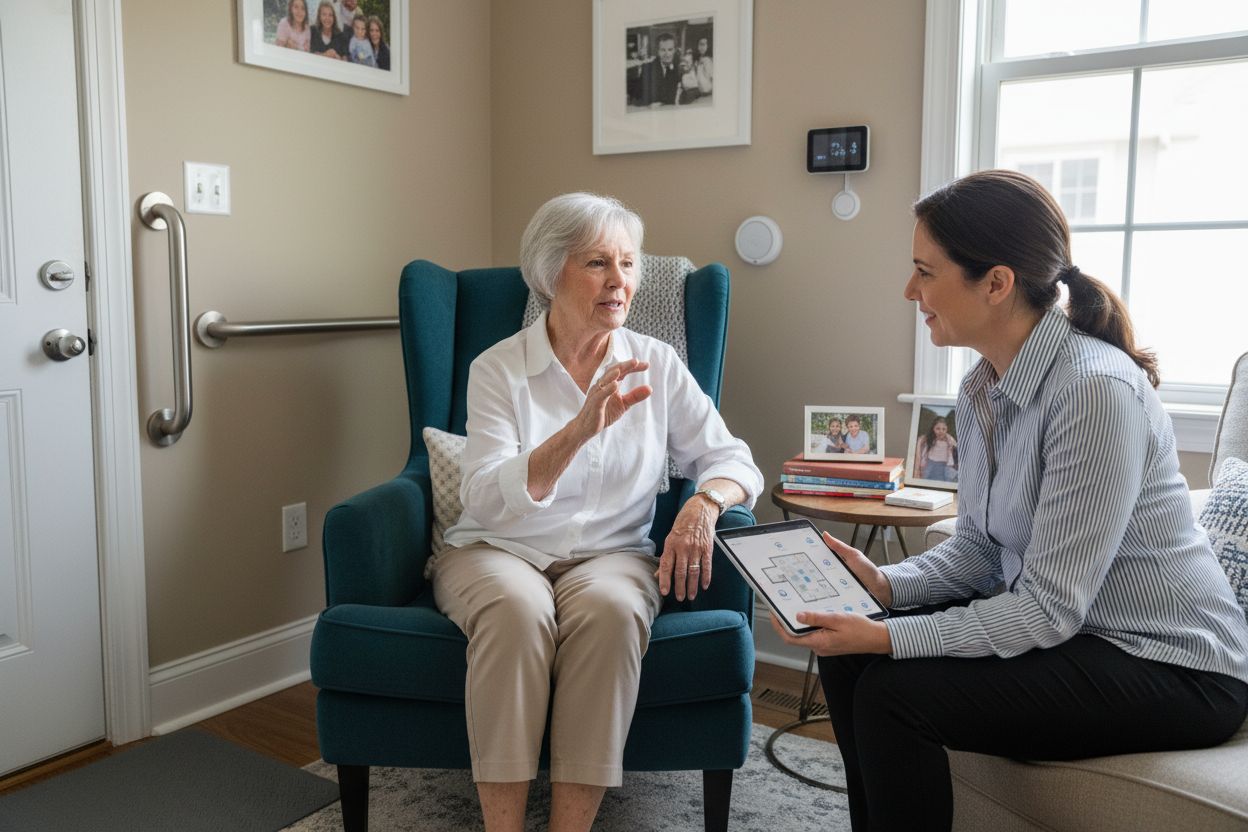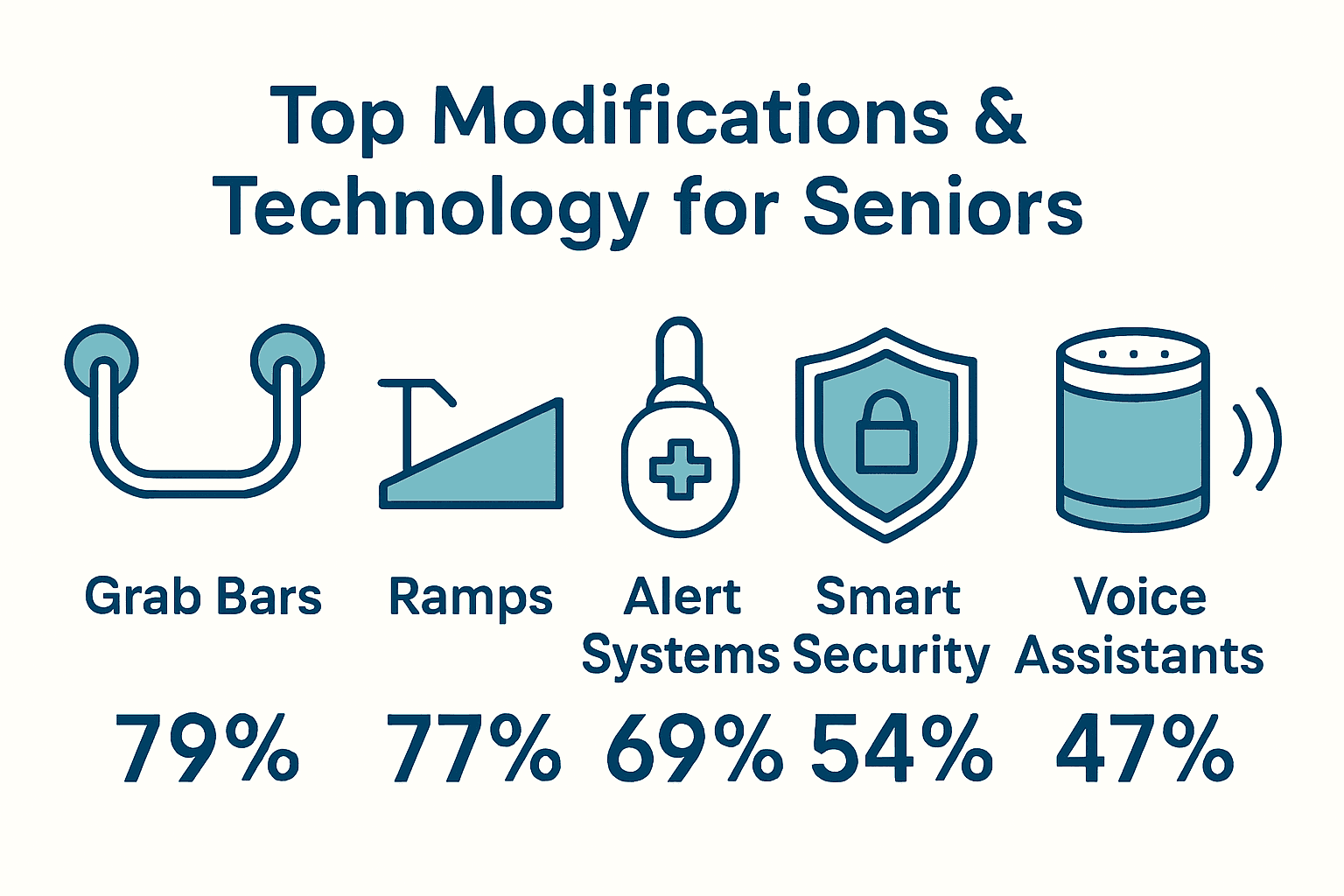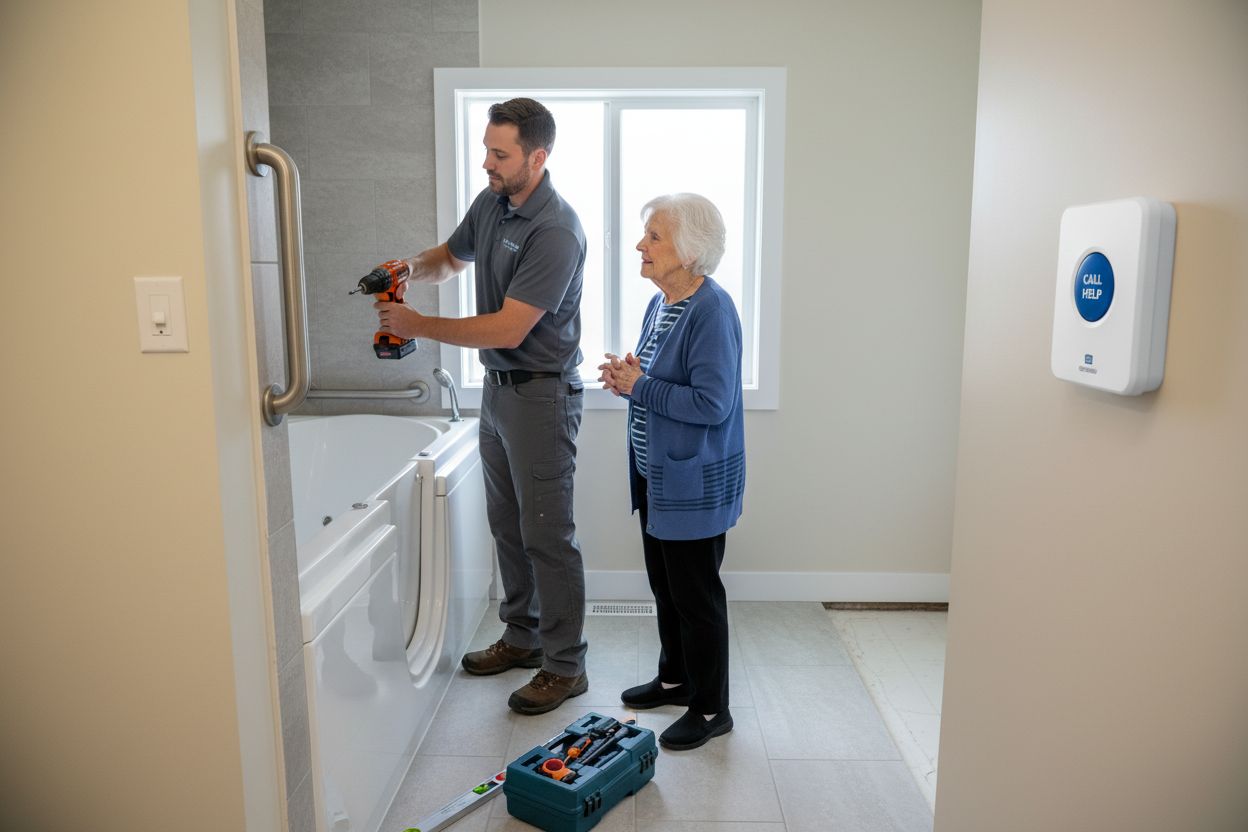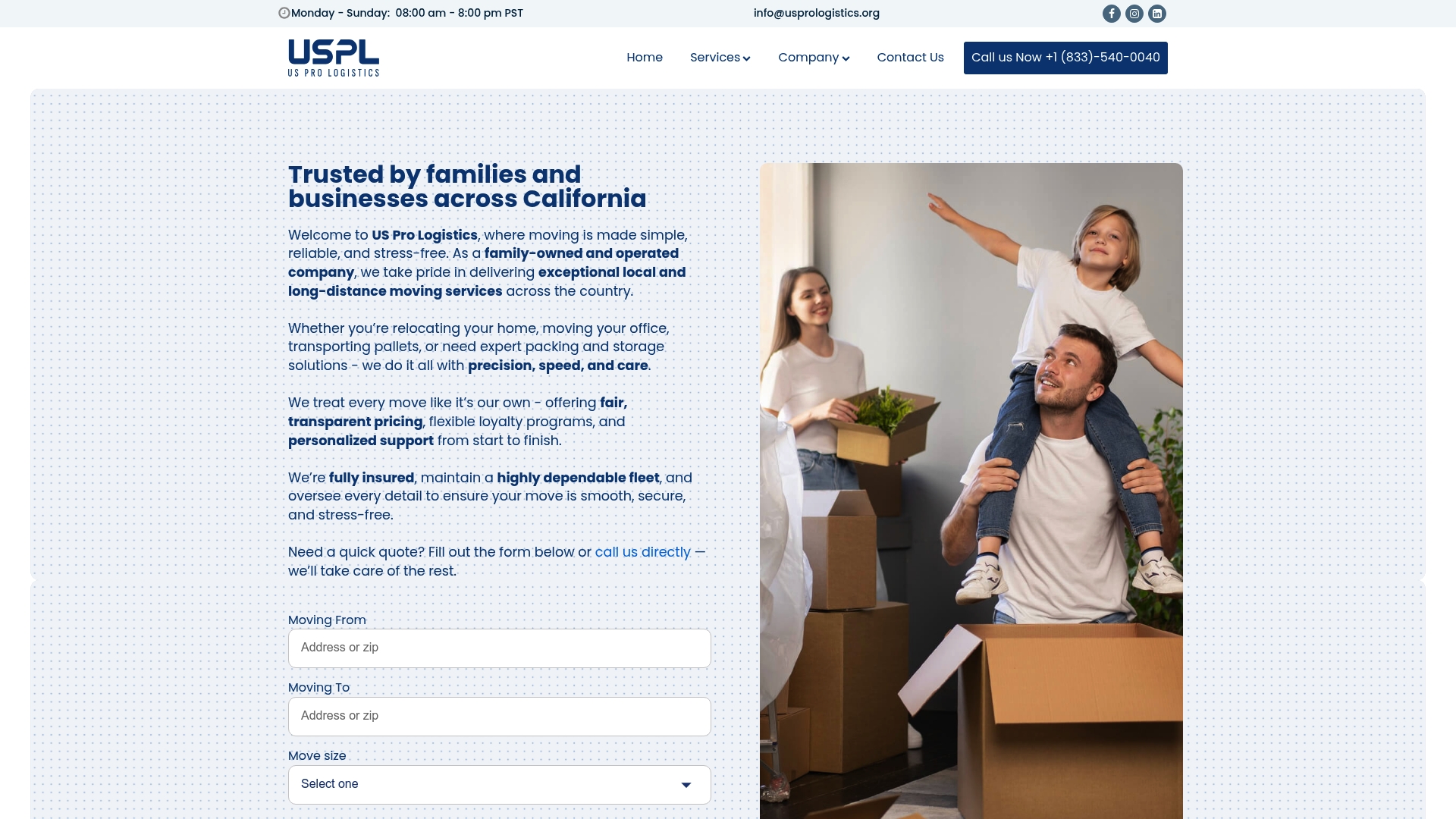
Nearly 90 percent of adults over age 65 say they want to remain in their own homes as they get older. This strong desire for independence highlights the growing demand for solutions that help seniors live safely and comfortably in familiar spaces. From smart technology to community programs, modern aging in place options go far beyond convenience, offering real support for health, social connection, and lifelong dignity.
| Point | Details |
|---|---|
| Holistic Approach to Aging in Place | Aging in place involves empowering seniors to maintain independence and quality of life while adapting to their changing needs. |
| Essential Services for Support | Key aging in place services include caregiver support, community programs, and technological innovations to enable independent living. |
| Importance of Home Modifications | Modifications such as safety enhancements and smart technologies are crucial for promoting safety and dignity among seniors. |
| Strategic Financial Planning | Effective financial strategies, including government assistance and home equity options, are vital for supporting long-term independent living. |
Aging in place represents much more than simply staying in one’s home. Aging in place is a holistic approach that empowers seniors to live independently and comfortably in familiar surroundings while maintaining their quality of life. According to a comprehensive scoping review, it’s defined as “One’s journey to maintain independence in one’s place of residence as well as to participate in one’s community,” which beautifully captures the multidimensional nature of this concept.
This approach encompasses several critical aspects that go beyond physical living space:
Successful aging in place requires strategic planning and thoughtful modifications. It’s not just about remaining stationary, but creating an adaptive environment that evolves with an individual’s changing requirements. Our comprehensive moving checklist for seniors can provide additional insights into preparing for this significant life transition.
Ultimately, aging in place is a personalized journey that looks different for every individual. The goal is to create an environment that supports independence, dignity, and quality of life, allowing seniors to continue living meaningfully in the spaces they know and love.
Aging in place services encompass a wide range of support systems designed to help seniors maintain independence and quality of life in their own homes. According to research from Wikipedia, these services are comprehensive and multifaceted, addressing various aspects of senior living and care.
Key types of aging in place services include:
Understanding financial planning for seniors becomes crucial when exploring these service options. Research from Florida Realtors highlights innovative approaches like co-housing arrangements and advanced home safety technologies that are transforming how seniors maintain independence.
The goal of these services is not just to provide care, but to empower seniors to live with dignity, maintain social connections, and preserve their sense of autonomy. By combining professional support, technological innovations, and personalized care strategies, aging in place services create a holistic approach to senior living that respects individual preferences and needs.
Home modifications play a critical role in enabling seniors to age safely and comfortably in their own living spaces. According to research from AARP Data Stories, seniors have clear preferences for technologies and adaptations that support independent living.
Key home modifications that seniors anticipate and prioritize include:
Our comprehensive moving checklist for seniors can help guide families through the process of implementing these critical home modifications. These technologies are not just about safety - they’re about preserving dignity, maintaining independence, and creating an environment that adapts to changing physical needs.

Here’s a comparison of popular home modifications and technologies for aging in place:
| Modification/Technology | Purpose | Senior Preference (AARP Data) |
|---|---|---|
| Grab bars & non-slip tiles | Safety improvement | 72% |
| Entry ramps & wider doors | Accessibility enhancement | 71% |
| Smart medical alert system | Emergency response | 64% |
| Smart home security | Home security | 44% |
| Voice-activated assistants | Daily living assistance | 43% |
Modern home modifications go beyond simple accessibility. They integrate intelligent technologies that provide real-time monitoring, emergency response, and seamless support.
 By combining physical adaptations with smart technologies, seniors can create living spaces that are not just safe, but truly empowering and responsive to their evolving requirements.
By combining physical adaptations with smart technologies, seniors can create living spaces that are not just safe, but truly empowering and responsive to their evolving requirements.
Financial planning for aging in place requires strategic thinking and comprehensive understanding of available resources. Research from Florida Realtors reveals multiple financial strategies seniors can leverage to support their independent living goals.
Key financial strategies for aging in place include:
Understanding financial planning for seniors becomes crucial in navigating these complex financial landscapes. Seniors should consider not just immediate costs, but long-term financial sustainability, potential healthcare needs, and the overall value of maintaining independence.
Successful financial planning for aging in place is about creating a flexible, forward-thinking strategy. It involves balancing immediate home modification expenses with potential savings from reduced healthcare costs, understanding various funding mechanisms, and making informed decisions that support both financial health and personal independence.
Legal frameworks play a critical role in supporting seniors’ ability to age in place safely and with dignity. According to the Americans with Disabilities Act, comprehensive accessibility standards are essential for creating inclusive environments that support independent living.
Key legal and safety considerations include:
Our comprehensive moving checklist for seniors can help families navigate these complex legal and safety considerations. The Older Americans Act establishes a robust framework of support, including home-based services, caregiver assistance, and protective services that are crucial for safe aging in place.
Ultimately, safety and accessibility are about creating an ecosystem of support that respects seniors’ independence while providing necessary protections. This involves understanding legal rights, leveraging community resources, and proactively designing living environments that adapt to changing physical needs and ensure personal security.
Are you or your loved ones feeling overwhelmed by the challenges of modifying a home, ensuring safety, and arranging the right support for aging in place? The journey to maintain independence is deeply personal and often requires more than just making physical changes. Professional planning, reliable logistics, and compassionate guidance can make all the difference in achieving the comfort and security described throughout this guide.

Now is the best time to connect your aging-in-place goals with trusted relocation and logistics support. At US Pro Logistics, we specialize in senior moves and customized solutions designed for privacy, dignity, and peace of mind. Explore our moving checklist for seniors to start planning with confidence. Visit our main site today and request your personalized quote. Take control of your future and let our family-owned team handle the details, so you can focus on enjoying the next chapter in your own home.
Aging in place refers to the ability of seniors to live independently and comfortably in their own homes as they age, while maintaining their quality of life and personal autonomy.
Common home modifications include safety enhancements like grab bars, accessibility improvements such as entry ramps, and the installation of medical emergency systems to facilitate independent living.
Available services include caregiver support, community-based programs, occupational therapy, telehealth services, and the use of smart home technologies for safety and convenience.
Financial planning can help seniors navigate costs associated with home modifications, leverage government assistance programs, explore home equity options, and budget for long-term care needs to ensure they can maintain their independence.
USDOT 3664256 This number is required for any company that operates commercial vehicles in interstate commerce (across state lines). It helps identify and track the safety performance and compliance of transportation companies.
MC 1268070 This number is specifically for companies involved in the transportation of goods or passengers for hire across state lines. It’s necessary for carriers operating in the moving industry and ensures they are authorized to operate as interstate carriers.